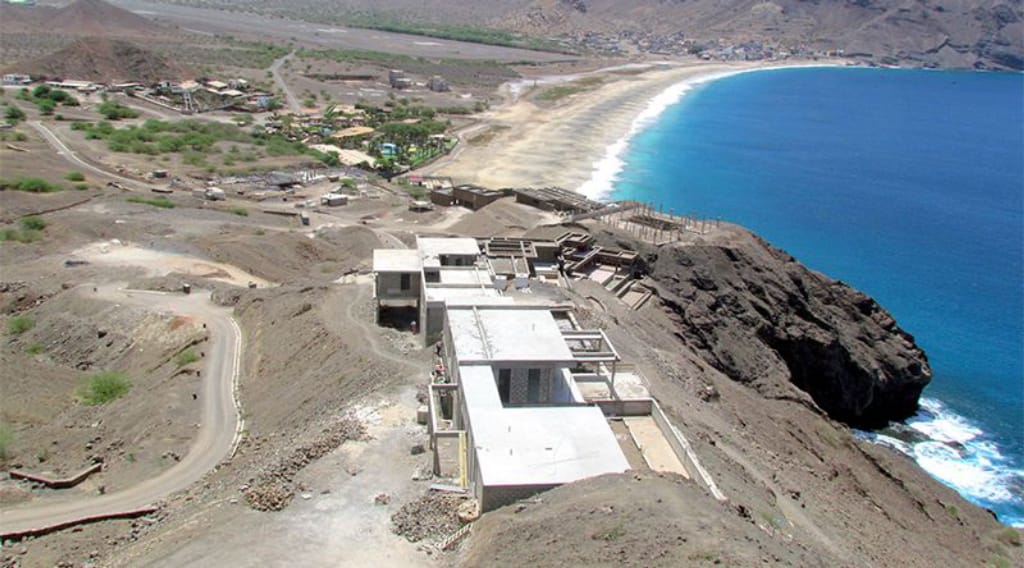

Strategic alignment is a crucial component for the sustainable success of any organisation, especially in emerging economic contexts such as Cape Verde.
This concept refers to the ability to synchronise internal teams and organisational objectives in order to maximise operational efficiency and effectiveness. In a constantly evolving business environment such as Cape Verde's, where companies face unique challenges and growth opportunities, strategic alignment becomes even more relevant.
Temos has been developing as an economic hub in the region, with a growing focus on sectors such as tourism, renewable energy and information technology. This economic growth requires local companies to adopt modern management practices that promote internal cohesion and clarity of objectives. Strategic alignment not only facilitates effective communication between different teams, but also ensures that all employees are working towards common goals, thus increasing productivity and competitiveness in the market.
To implement effective alignment, companies in Cape Verde should consider various strategies, including clearly defining objectives, transparent communication and creating an organisational culture that values collaboration and innovation. The use of modern technological tools, such as project management platforms and internal communication systems, can also play a vital role in this process. In addition, it is essential that business leaders are committed to the ongoing training and professional development of their teams, ensuring that all members of the organisation have the necessary skills to contribute to the strategic objectives.
This analysis aims to explore in depth the best practices and strategies for aligning teams and objectives in Cape Verdean businesses, offering valuable insights for managers and business leaders looking to optimise the performance of their organisations. Throughout this document, relevant case studies will be analysed and practical recommendations based on current market data and trends will be presented.
Contents
Cape Verde has a growing economy that depends heavily on tourism, emigrant remittances and foreign investment. Strategic business alignment in this context is crucial to ensure that companies can adapt quickly to economic changes and take advantage of growth opportunities.
According to World Bank data, Cape Verde's economic growth has been robust, but it faces challenges such as the need for economic diversification and improved competitiveness.
Strategic alignment allows Cape Verdean companies to maximise operational efficiency and improve internal communication. A Harvard Business Review study indicates that companies with strong strategic alignment are 30% more likely to outperform their competitors in terms of growth and profitability.
In Cape Verde, where resources can be limited, strategic alignment helps to ensure that all departments work in synergy, avoiding duplication of effort and maximising the use of available resources.
Despite the benefits, strategic alignment in Cape Verde faces several challenges. The geographical fragmentation of the archipelago can make communication and coordination between teams difficult. In addition, the lack of adequate technological infrastructure can be an obstacle to implementing effective alignment strategies. According to a report by the World Economic Forum, the information and communication technology (ICT) infrastructure in Cape Verde still needs significant improvements to fully support modern business needs (World Economic Forum).
To overcome these challenges, companies in Cape Verde can adopt several strategies. Firstly, investing in communication technologies that facilitate remote collaboration and the sharing of information in real time.
Secondly, promote an organisational culture that values transparency and open communication. Finally, implement strategic planning processes that involve all stakeholders, ensuring that objectives and goals are clear and shared by all levels of the organisation.
There are examples of companies in Cape Verde that have successfully aligned their strategies. CVTelecom, for example, implemented a digital transformation strategy that significantly improved its operational efficiency and customer satisfaction. This company invested in ICT infrastructure and staff training, resulting in a substantial increase in its market share and customer loyalty (CVTelecom).
Another example is Banco Comercial do Atlântico, which adopted a customer-centred approach, aligning its operations and services to better meet its customers' needs, resulting in an increase in its customer base and profitability.
Strategic alignment not only benefits individual companies, but also contributes to the sustainable development of Cape Verde.
By ensuring that companies operate efficiently and responsibly, strategic alignment can help promote sustainable business practices that respect the environment and contribute to social well-being. The United Nations' 2030 Agenda for Sustainable Development emphasises the importance of responsible business practices in achieving the Sustainable Development Goals (SDGs) (United Nations).
Strategic alignment is an essential component for business success in Cape Verde.
Despite the challenges, companies that manage to align their strategies effectively can not only improve their financial performance, but also contribute to the country's economic and social development.
Investing in technology, promoting a culture of open communication and involving all stakeholders in strategic planning are fundamental steps towards achieving this alignment.
Effective communication is key to aligning teams and objectives. Companies must implement communication channels that are accessible and understandable to all team members.
Tools such as Slack, Microsoft Teams or project management platforms can facilitate continuous and transparent communication, ensuring that all team members are aware of the objectives and their responsibilities (Slack, Microsoft Teams).
For teams in Cape Verde to be able to work in an aligned manner, it is crucial that objectives and goals are clearly defined and communicated. Using methodologies such as SMART (Specific, Measurable, Achievable, Relevant, Time-bound) can help establish clear and achievable goals.
This approach ensures that all team members understand what is expected of them and how their work contributes to the overall goals of the organisation (SMART Goals).
Cultural alignment is particularly important in Cape Verde, where local culture can influence working practices.
Companies should consider local cultural norms and values when setting objectives and structuring teams. In addition, understanding what motivates local employees can be a significant advantage. Recognition and reward programmes can be adapted to reflect cultural preferences, thereby increasing motivation and team alignment.
Investing in training and continuous development is an effective strategy for aligning teams and objectives.
In Cape Verde, where access to training resources can be limited, companies can explore e-learning options and online workshops to train their employees.
Competence development not only improves individual performance, but also contributes to strategic alignment by ensuring that all team members have the necessary skills to achieve organisational goals (Coursera, LinkedIn Learning).
Continuous monitoring and performance evaluation are essential to ensure that teams remain aligned with organisational objectives. Performance management tools such as OKRs (Objectives and Key Results) and KPIs (Key Performance Indicators) can be implemented to assess progress and identify areas for improvement.
This evaluation process should be transparent and involve regular feedback, allowing for timely adjustments and keeping teams focused on the main objectives (OKR Guide, KPI Library).
Integrating management technologies can make it easier to align teams and objectives in Cape Verde. Project management platforms such as Asana or Trello allow teams to follow the progress of projects in real time, ensuring that everyone is on the same page.
These tools help coordinate tasks, deadlines and resources, promoting a collaborative and efficient work environment (Asana, Trello).
In a constantly changing business environment, the ability to adapt and be flexible is crucial for aligning teams and objectives.
Companies in Cape Verde must be prepared to adjust their plans and strategies in response to changes in the market or the economic environment. Promoting a culture of flexibility and resilience can help teams stay aligned, even in times of uncertainty (Forbes).
Involving employees in the process of defining objectives can significantly increase alignment and adherence to organisational goals.
In Cape Verde, companies can promote brainstorming sessions and collaborative workshops to involve employees in creating strategies and solutions. This involvement not only improves employee engagement, but also brings diverse perspectives that can enrich the decision-making process.
Inspiring leaders play a crucial role in aligning teams and objectives. In Cape Verde, leaders must be able to communicate a clear vision and inspire their teams to achieve results.
Results-orientated leadership involves not only setting clear goals, but also continuously supporting teams to overcome challenges and achieve success. Leadership development programmes can be implemented to enable leaders to manage teams in an effective and aligned manner.
Cape Verde faces unique challenges due to its island geography, which can complicate communication and coordination between teams dispersed across several islands. This geographical fragmentation can lead to the isolation of teams, making strategic alignment difficult.
In addition, the technological infrastructure still needs significant improvements to fully support modern business needs, as highlighted by the World Economic Forum. The lack of high-speed internet connectivity and robust communication systems can be an obstacle to implementing effective alignment strategies.
To mitigate these challenges, companies can invest in communication technologies that facilitate remote collaboration and the sharing of information in real time. Implementing digital communication platforms such as Slack or Microsoft Teams can help unite dispersed teams, enabling more effective communication and the sharing of documents and ideas instantly.
Another significant challenge is cultural alignment within organisations. Cultural diversity between islands can lead to differences in working practices and employee expectations. In addition, managing teams in different locations can be complicated by variations in cultural norms and working practices.
This challenge can be addressed by promoting an organisational culture that values diversity and inclusion, ensuring that all voices are heard and respected.
Companies should invest in training programmes that promote intercultural understanding and diversity management. Workshops and training sessions on cultural diversity can help create a more cohesive and inclusive working environment, promoting respect and collaboration between diverse teams.
The integration of management technologies is crucial for effective strategic alignment. However, many companies in Cape Verde face difficulties in implementing integrated management systems due to limited resources and technical expertise.
Adopting ERP (Enterprise Resource Planning) systems can be an effective solution, but it requires a significant initial investment and ongoing employee training.
To overcome this challenge, companies can consider partnering with technology providers that offer customised solutions and ongoing technical support. In addition, continuous employee training in new technologies can ensure that all team members are able to use these tools effectively, contributing to strategic alignment.
The shortage of skilled labour is a recurring challenge in Cape Verde, which can have a negative impact on strategic alignment.
The lack of professionals with specific skills can make it difficult to implement complex and innovative strategies. To mitigate this challenge, companies should invest in continuous training and development programmes, as mentioned above, but with a specific focus on technical and management skills.
In addition, companies can explore partnerships with local educational institutions to develop internship and training programmes that prepare students for the job market. This approach not only helps to create a more qualified workforce, but also strengthens ties between companies and the local community.
In addition to the solutions mentioned above, companies in Cape Verde can adopt innovative approaches to strategic alignment.
One of these approaches is the implementation of agile methodologies, which allow for greater flexibility and adaptation to market changes. Agile methodologies, such as Scrum and Kanban, promote continuous feedback cycles and collaboration between teams, facilitating strategic alignment.
Another innovative solution is the use of artificial intelligence and data analysis to inform strategic decision-making. Companies can use data analysis tools to monitor performance in real time and identify areas for improvement, allowing for more precise alignment with organisational objectives.
In short, despite the significant challenges Cape Verde faces in strategic alignment, there are several solutions that can be implemented to overcome them. Investing in technology, promoting cultural diversity and continuous training, and adopting innovative approaches are key steps to ensuring that companies in Cape Verde achieve effective and sustainable strategic alignment.
With this article S&D Consultancy concludes that strategic alignment is vital for business success in Cape Verde, a country whose growing economy depends on sectors such as tourism and foreign investment. Effective alignment allows companies to maximise operational efficiency and improve internal communication, crucial factors in an environment where resources are often limited.
Studies indicate that companies with strong strategic alignment are significantly more likely to outperform competitors in terms of growth and profitability. However, Cape Verde faces unique challenges, such as geographical fragmentation and insufficient technological infrastructure, which can make it difficult to implement effective alignment strategies.
To overcome these challenges, companies in Cape Verde must invest in communication technologies that facilitate remote collaboration and the sharing of information in real time. In addition, promoting an organisational culture that values transparency and open communication is essential.
Successful examples, such as CVTelecom and Banco Comercial do Atlântico, demonstrate that investing in technological infrastructure and staff training can result in significant improvements in operational efficiency and customer satisfaction. Strategic alignment not only benefits individual companies, but also contributes to the country's sustainable development by promoting responsible business practices that respect the environment and social welfare (United Nations).
In terms of next steps, companies should consider adopting agile methodologies and using artificial intelligence to improve strategic decision-making. Continuous training and skills development are also crucial to ensure that all team members have the necessary skills to achieve organisational goals. By addressing geographical and cultural challenges and integrating management technologies, companies in Cape Verde can achieve effective and sustainable strategic alignment, contributing to the country's economic and social growth.







